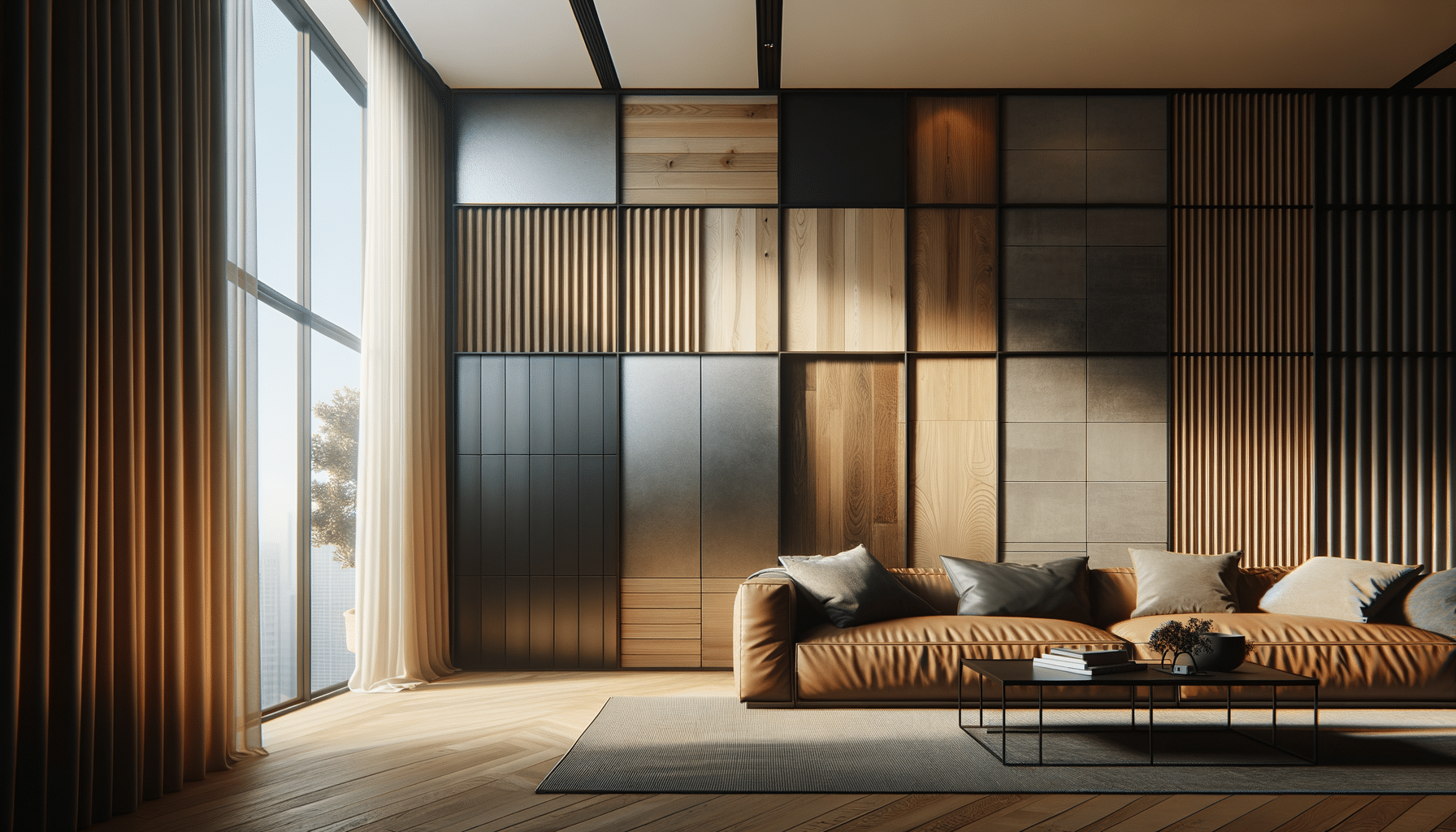
Choosing the Right Wall Panels for Modern Home Design
Introduction to Wall Panels
Wall panels have become a significant element in modern home design, offering a blend of aesthetics and practicality. Their ability to transform spaces is unparalleled, making them a popular choice for homeowners looking to enhance their interiors. With the growing trend towards minimalism and sleek designs, wall panels provide an excellent opportunity to add texture, color, and depth to a room without overwhelming the space.
Wall panels are available in a plethora of materials, each offering its unique set of benefits. From traditional wood and modern MDF to innovative materials like PVC and gypsum, the options are endless. This diversity allows homeowners to select panels that not only complement their design vision but also align with practical considerations such as durability and maintenance.
In this article, we will explore the world of wall panels, delving into their types, benefits, and installation processes. We’ll also discuss how to choose the right panels for your home, ensuring they meet both your aesthetic and functional needs.
Types of Wall Panels
Wall panels come in various types, each catering to different aesthetic preferences and functional requirements. Understanding these types can help you make an informed decision when selecting panels for your home.
Wooden Panels: Known for their natural beauty and warmth, wooden panels are a timeless choice. They are available in different finishes, including natural, stained, or painted, allowing for customization to match any decor style.
MDF Panels: Medium-density fiberboard (MDF) panels offer a smooth surface that is easy to paint or finish. They are a cost-effective alternative to solid wood panels, providing a similar look at a fraction of the price.
PVC Panels: PVC panels are known for their durability and moisture resistance, making them ideal for areas like bathrooms and kitchens. They come in a variety of colors and patterns, offering versatility in design.
Gypsum Panels: Often used for false ceilings and walls, gypsum panels are fire-resistant and provide good thermal and acoustic insulation. They are an excellent choice for creating modern, sleek interiors.
- Wooden Panels: Natural beauty, warmth, customizable finishes.
- MDF Panels: Cost-effective, smooth surface, easy to paint.
- PVC Panels: Durable, moisture-resistant, versatile design.
- Gypsum Panels: Fire-resistant, good insulation properties.
Benefits of Using Wall Panels
The use of wall panels in home design offers numerous advantages, making them a popular choice among homeowners and designers alike. Here are some of the key benefits:
Aesthetic Appeal: Wall panels add a layer of texture and depth to any room, enhancing its visual appeal. They can be used to create feature walls that draw attention and add character to a space.
Easy Installation: Many wall panels come with easy installation options, such as tongue-and-groove systems or adhesive backing. This makes them a convenient choice for DIY enthusiasts looking to update their interiors without professional help.
Durability: Depending on the material, wall panels can be highly durable, resistant to wear and tear, and easy to maintain. This makes them a practical choice for high-traffic areas.
Insulation Properties: Some wall panels, such as gypsum and certain types of wood, offer excellent thermal and acoustic insulation, contributing to energy efficiency and comfort within the home.
- Aesthetic Appeal: Enhances visual appeal, creates feature walls.
- Easy Installation: DIY-friendly, convenient options.
- Durability: Resistant to wear and tear, easy maintenance.
- Insulation Properties: Thermal and acoustic benefits.
Choosing the Right Wall Panels
Selecting the right wall panels for your home requires careful consideration of various factors. Here are some tips to guide you in making the best choice:
Assess Your Needs: Consider the purpose of the panels. Are you looking for something purely decorative, or do you need panels that offer specific functional benefits such as moisture resistance or insulation?
Consider the Space: The room where the panels will be installed can influence your choice. For example, moisture-resistant panels are ideal for bathrooms, while sound-insulating panels may be beneficial in a home office.
Match Your Style: Ensure that the panels you choose complement the overall style of your home. Whether you prefer a rustic, traditional look or a sleek, modern aesthetic, there are panels to suit every taste.
Budget Considerations: Wall panels come in a range of prices, so it’s essential to set a budget before you start shopping. Remember to factor in installation costs if you’re not planning a DIY project.
- Assess Your Needs: Decorative or functional purposes.
- Consider the Space: Room-specific requirements.
- Match Your Style: Complement home aesthetics.
- Budget Considerations: Set a budget, consider installation costs.
Conclusion: Transform Your Space with Wall Panels
Wall panels offer an exciting opportunity to transform your home, combining style and functionality in a single solution. By carefully selecting the right panels, you can enhance the aesthetics of your interiors while also addressing practical needs such as insulation and durability.
With the wide variety of materials, styles, and colors available, wall panels can be tailored to suit any design vision. Whether you’re aiming for a cozy, rustic vibe or a sleek, contemporary look, there’s a panel option that can help you achieve your desired outcome.
Ultimately, the right wall panels can elevate your living space, turning ordinary rooms into extraordinary environments. By considering your needs, preferences, and budget, you can make an informed decision that will enhance your home’s beauty and functionality for years to come.


